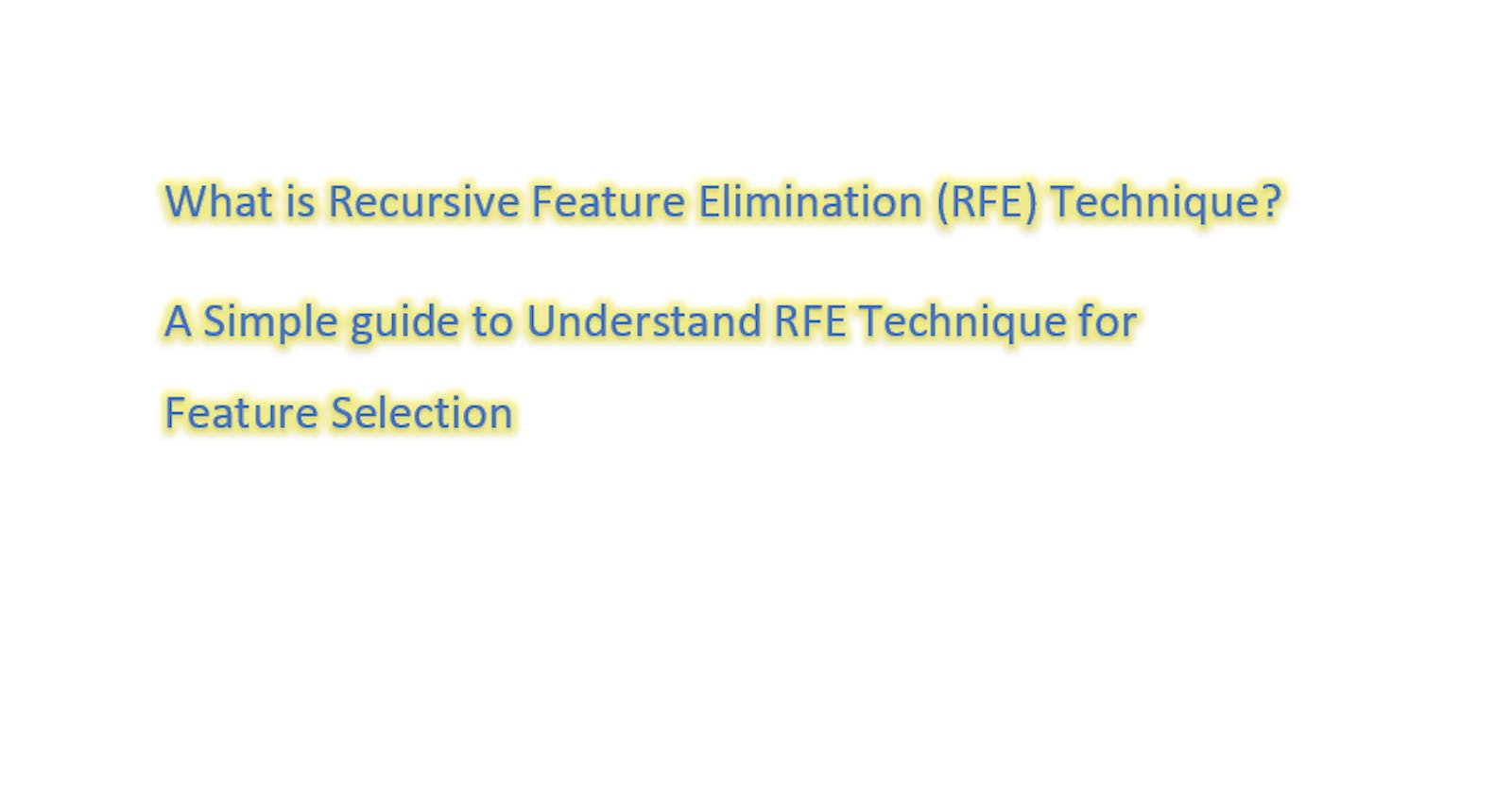Introduction:
Feature selection is an important step in machine learning that can help to improve the accuracy, efficiency, and interpretability of machine learning models. By selecting the most important features in a dataset, we can build more accurate and efficient models.
There are many techniques available for Feature Selection, such as Filter methods, wrapper methods, and embedded techniques. Each of them has its own advantages and disadvantages.
This article is all about Recursive Feature Elimination (RFE) technique. This comes under the wrapper method. But, one can argue that it works like a hybrid method of both the Wrapper and Embedded methods.
What is Recursive Feature Elimination Technique?
Recursive Feature Elimination (RFE) is a feature selection technique used in machine learning to identify the most important features in a dataset. The goal of RFE is to reduce the number of features in a dataset while maintaining or improving the accuracy of the model.
The RFE technique works by recursively removing features from the dataset and building a model using the remaining features. The importance of each feature is then evaluated based on the performance of the model. The least important features are eliminated, and the process is repeated until the desired number of features is reached.
RFE is a powerful technique that can help improve the accuracy and efficiency of machine learning models. By reducing the number of features in a dataset, RFE can help prevent overfitting. Additionally, RFE can help identify the most important features in a dataset, which can be useful for feature engineering and data analysis.
For example,
Imagine you have a big basket of fruits, and you want to teach a computer to recognize which fruits are apples and which are oranges. The computer needs to look at different features of the fruits, such as their color, shape, and size, to make accurate predictions.
However, not all features are equally important. Some features, such as the color of the fruit, may be more important than others, such as the size of the stem. RFE helps the computer to identify the most important features by removing the least important ones.
RFE works by removing one feature at a time and seeing how well the computer can still recognize the fruits. If the computer still does a good job, then that feature may not be very important. If the computer does a worse job, then that feature may be more important.
By repeating this process and removing the least important features, RFE helps the computer to focus on the most important features and make more accurate predictions. This is like taking out the leaves and stems from the basket of fruits to help the computer focus on the most important features, such as the color and shape of the fruits.
Python Code Example:
Here's an example of how to use Recursive Feature Elimination (RFE) in Python using the scikit-learn library:
from sklearn.feature_selection import RFE
from sklearn.linear_model import LinearRegression
from sklearn.datasets import load_boston
# Load the Boston Housing dataset
boston = load_boston()
# Create a linear regression model
model = LinearRegression()
# Create an RFE object with 5 features
rfe = RFE(model, n_features_to_select=5)
# Fit the RFE object to the data
rfe.fit(boston.data, boston.target)
# Print the selected features
print("Selected Features: ")
for i in range(len(rfe.support_)):
if rfe.support_[i]:
print(boston.feature_names[i])
In this example, we first import the necessary libraries, including RFE, LinearRegression, and load_boston from scikit-learn. We then load the Boston Housing dataset and create a linear regression model.
Next, we create an RFE object with 5 features and fit it to the data using the fit() method. The RFE object will recursively eliminate features until only 5 features remain.
Finally, we print the selected features using a for loop and the support_ attribute of the RFE object. The support_ attribute is a Boolean array that indicates which features were selected by the RFE algorithm.
You can also check the Jupyter Notebook for the results: Click Here
Advantages and Disadvantages of Recursive Feature Elimination (RFE) Technique
Advantages:
Improved Model Performance: RFE can help improve the performance of machine learning models by reducing the number of features in the dataset and preventing overfitting.
Computationally Efficient: RFE fits the model only once. So, it is computationally efficient.
Flexibility: RFE can be used with a wide range of machine learning algorithms, making it a versatile technique.
Disadvantages:
Model Sensitivity: RFE can be sensitive to the choice of machine learning algorithm and the number of features selected, which can affect the performance of the model.
Requires Domain Knowledge: RFE requires domain knowledge to interpret the results and select the appropriate number of features for the model. Moreover, it also required hyperparameter tuning.
Conclusion:
Overall, RFE is a powerful technique for feature selection in machine learning, but it has some limitations. It is important to carefully consider the advantages and disadvantages of RFE before using it in a machine learning project.
Check Out my LinkedIn profile: Profile Link
